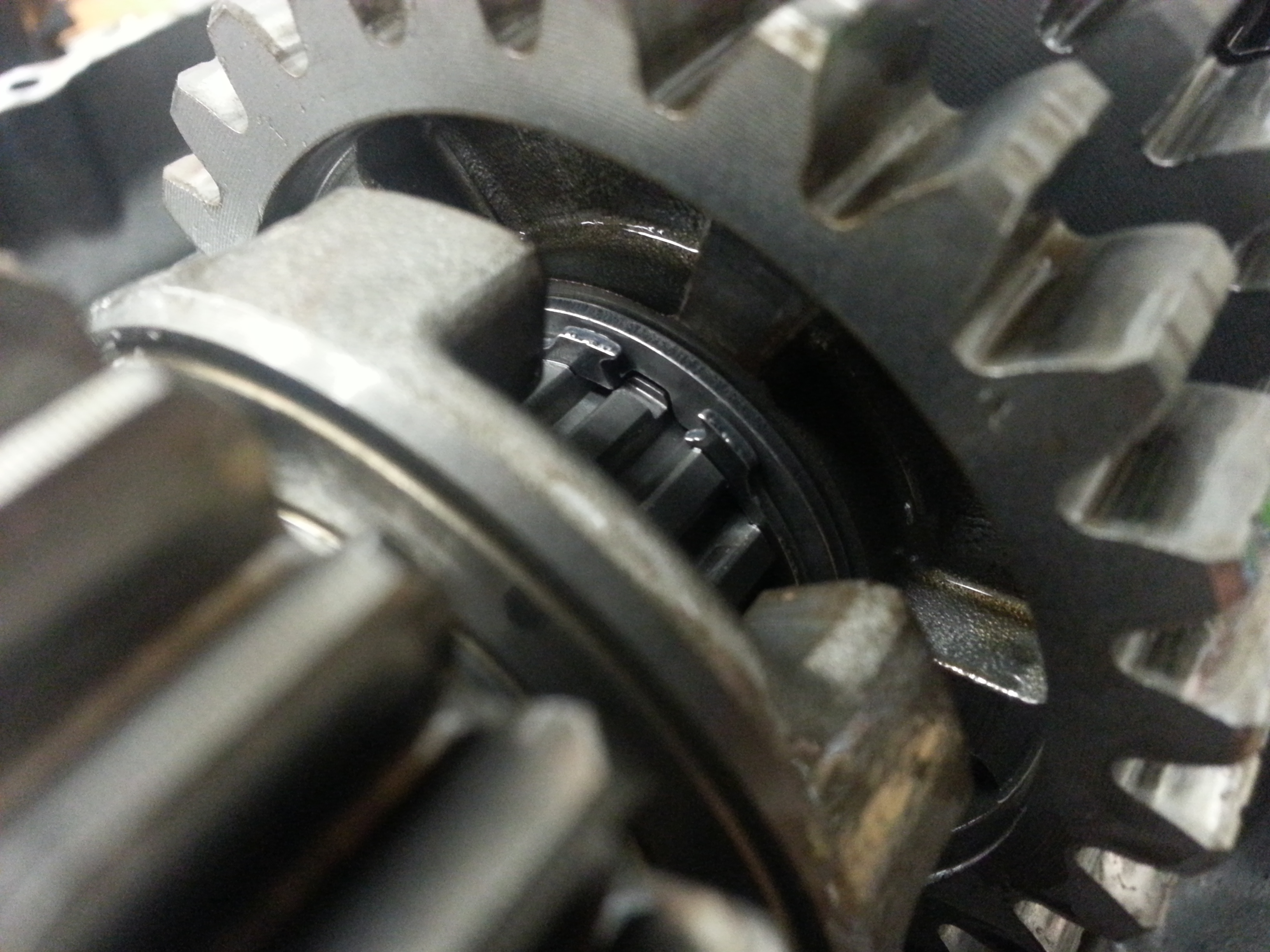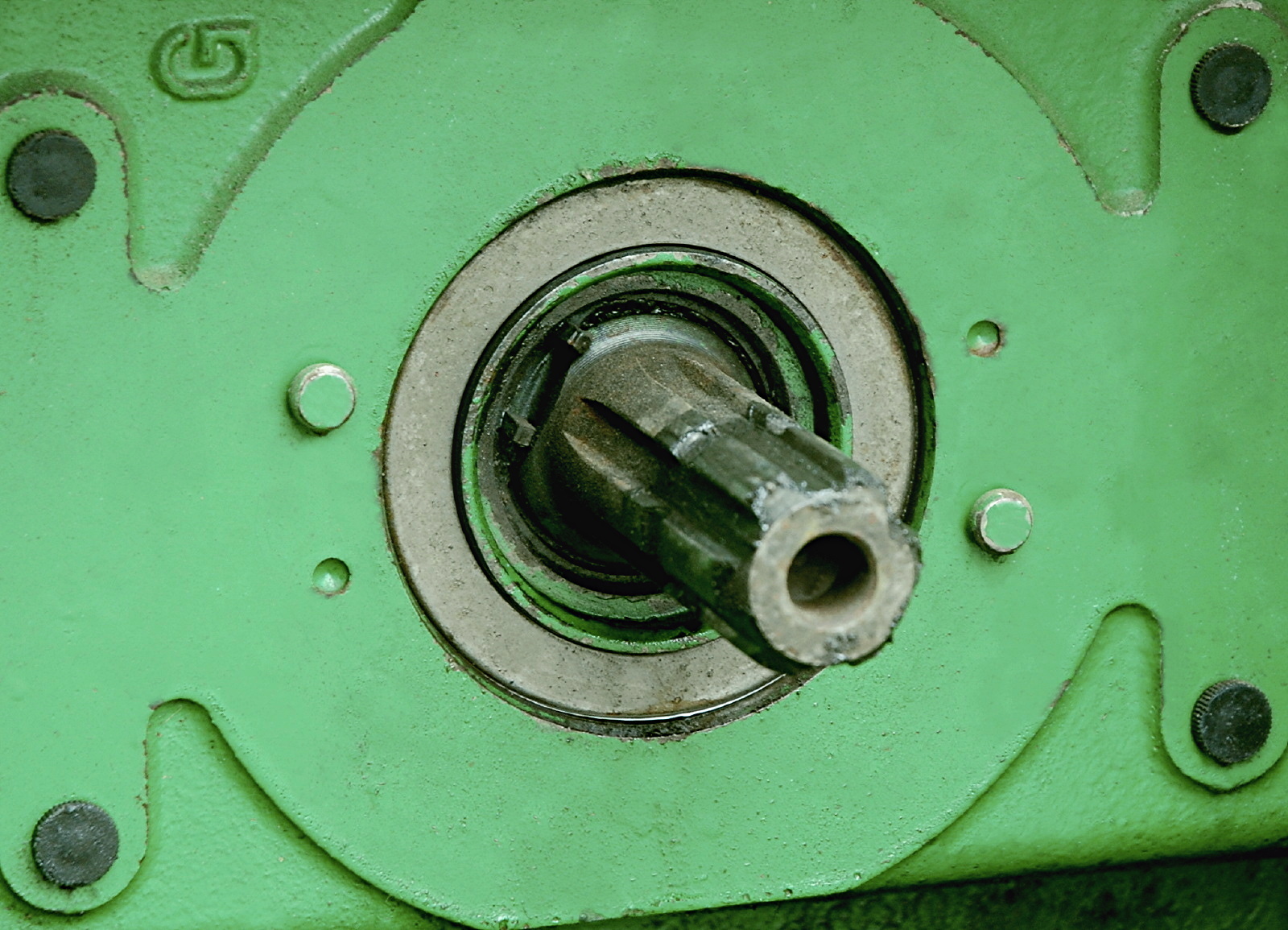|
Non-synchronous Transmission
A non-synchronous transmission, also called a crash gearbox, is a form of manual transmission based on gears that do not use synchronizing mechanisms. They require the driver to manually synchronize the transmission's input speed (engine RPM) and output speed (driveshaft speed). Non-synchronous transmissions are found primarily in various types of industrial machinery; such as tractors and semi-tractors. Non-synchronous manual transmissions are also found on motorcycles, in the form of constant-mesh sequential manual transmissions. Prior to the 1950s and 1960s, most cars used constant-mesh (and also sliding-mesh) but non-synchronous transmissions. History Most early automobiles were rear-engined, using a single-speed transmission and belt-drive to power the rear wheels. In 1891, the French Panhard et Levassor automobile used a three-speed manual transmission and is considered to have set the template for multi-speed manual transmissions in motor vehicles. This transmiss ... [...More Info...] [...Related Items...] OR: [Wikipedia] [Google] [Baidu] |
Float Shifting
Float shifting or floating gears, also called "slip shifting", "dead sticking" or "bang shifting", is the process of changing gears, in typically a non-synchronous transmission, without depressing the clutch. Shifting in this manner is also used with synchronous manual transmissions, particularly after a clutch failure, to prevent destroying the syncromeshes with the power of the engine. The most skillful drivers can shift non-synchronous transmissions without using the clutch by bringing the engine to exactly the right RPM in neutral before attempting to complete a shift. If done improperly, it can damage or destroy a transmission. Some truck (lorry) drivers use this technique with the higher gears when at work. The technique is sometimes also used on motorcycles, but has largely been replaced by quickshifters for competitive use. Technique To upshift, the driver should first bring the engine up to speed. They must then shift to neutral and apply moderate pressure to the gea ... [...More Info...] [...Related Items...] OR: [Wikipedia] [Google] [Baidu] |
Mechanical Engineering
Mechanical engineering is the study of physical machines that may involve force and movement. It is an engineering branch that combines engineering physics and mathematics principles with materials science, to design, analyze, manufacture, and maintain mechanical systems. It is one of the oldest and broadest of the engineering branches. Mechanical engineering requires an understanding of core areas including mechanics, dynamics, thermodynamics, materials science, structural analysis, and electricity. In addition to these core principles, mechanical engineers use tools such as computer-aided design (CAD), computer-aided manufacturing (CAM), and product lifecycle management to design and analyze manufacturing plants, industrial equipment and machinery, heating and cooling systems, transport systems, aircraft, watercraft, robotics, medical devices, weapons, and others. Mechanical engineering emerged as a field during the Industrial Revolution in Europe in the 18th ce ... [...More Info...] [...Related Items...] OR: [Wikipedia] [Google] [Baidu] |
Gear Ratio
A gear train is a mechanical system formed by mounting gears on a frame so the teeth of the gears engage. Gear teeth are designed to ensure the Pitch circle diameter (gears), pitch circles of engaging gears roll on each other without slipping, providing a smooth transmission of rotation from one gear to the next. Features of gears and gear trains include: * The gear ratio of the pitch circles of mating gears defines the speed ratio and the mechanical advantage of the gear set. * A epicyclic gearing, planetary gear train provides high gear reduction in a compact package. * It is possible to design gear teeth for gears that are non-circular gear, non-circular, yet still transmit torque smoothly. * The speed ratios of chain drive, chain and belt (mechanical), belt drives are computed in the same way as gear ratios. See bicycle gearing. The transmission of rotation between contacting toothed wheels can be traced back to the Antikythera mechanism of Greece and the south-pointing cha ... [...More Info...] [...Related Items...] OR: [Wikipedia] [Google] [Baidu] |
Dog Clutch
A dog clutch (also known as a positive clutch or dog gears) is a type of clutch that couples two rotating shafts or other rotating components by engagement of interlocking teeth or dogs rather than by friction. The two parts of the clutch are designed such that one will push the other, causing both to rotate at the same speed and will never slip. In engineering, a " dog" is a tool or device used to lock two components in relation to each other. Dog clutches are used where slip is undesirable and/or the clutch is not used to control torque. Without slippage, dog clutches are not affected by wear in the same way that friction clutches are, but result in shock when shafts of different speeds are engaged. For this reason they are best used when sudden starting action is acceptable and the inertia of the system is small. Dog clutches are used inside constant-mesh manual transmissions to lock different gears to the rotating input and output shafts. A synchromesh arrangement ensures sm ... [...More Info...] [...Related Items...] OR: [Wikipedia] [Google] [Baidu] |
Semi-automatic Transmission
A semi-automatic transmission is a "theoretical" multiple-speed transmission where part of its operation is automated (typically the actuation of the clutch), but the driver's input would be required to launch the vehicle from a standstill and to manually change gears. Semi-automatic transmissions were exclusively used in motorcycles and are based on conventional manual transmissions or sequential manual transmissions, but use an automatic clutch system. But some semi-automatic transmissions have also been based on standard hydraulic automatic transmissions with torque converters and planetary gearsets. Names for specific types of semi-automatic transmissions include ''clutchless manual'', ''auto-manual'', ''auto-clutch manual'', and ''paddle-shift'' transmissions. These systems facilitate gear shifts for the driver by operating the clutch system automatically, usually via switches that trigger an actuator or servo, while still requiring the driver to manually shift gears. T ... [...More Info...] [...Related Items...] OR: [Wikipedia] [Google] [Baidu] |
Automatic Transmission
An automatic transmission (sometimes abbreviated to auto or AT) is a multi-speed transmission used in internal combustion engine-based motor vehicles that does not require any input from the driver to change forward gears under normal driving conditions. It typically includes a transmission, axle, and differential in one integrated assembly, thus technically becoming a transaxle. The most common type of automatic transmission is the hydraulic automatic, which uses a planetary gearset, hydraulic controls, and a torque converter. Other types of automatic transmissions include continuously variable transmissions (CVT), automated manual transmissions (AMT), and dual-clutch transmissions (DCT). An electronic automatic transmission (EAT) may also be called an electronically controlled transmission (ECT), or electronic automatic transaxle (EATX). A hydraulic automatic transmission may also colloquially called a " slushbox" or simply a "torque converter", although the latter ... [...More Info...] [...Related Items...] OR: [Wikipedia] [Google] [Baidu] |
Synchromesh
A manual transmission (MT), also known as manual gearbox, standard transmission (in Canada, the United Kingdom, and the United States), or stick shift (in the United States), is a multi-speed motor vehicle transmission system, where gear changes require the driver to manually select the gears by operating a gear stick and clutch (which is usually a foot pedal for cars or a hand lever for motorcycles). Early automobiles used ''sliding-mesh'' manual transmissions with up to three forward gear ratios. Since the 1950s, ''constant-mesh'' manual transmissions have become increasingly commonplace and the number of forward ratios has increased to 5-speed and 6-speed manual transmissions for current vehicles. The alternative to a manual transmission is an automatic transmission; common types of automatic transmissions are the hydraulic automatic transmission (AT), and the continuously variable transmission (CVT), whereas the automated manual transmission (AMT) and dual-clutch transmis ... [...More Info...] [...Related Items...] OR: [Wikipedia] [Google] [Baidu] |
Racecars
Auto racing (also known as car racing, motor racing, or automobile racing) is a motorsport involving the racing of automobiles for competition. Auto racing has existed since the invention of the automobile. Races of various sorts were organised, with the first recorded as early as 1867. Many of the earliest events were effectively reliability trials, aimed at proving these new machines were a practical mode of transport, but soon became an important way for automobile makers to demonstrate their machines. By the 1930s, specialist racing cars had developed. There are now numerous different categories, each with different rules and regulations. History The first prearranged match race of two self-powered road vehicles over a prescribed route occurred at 4:30 A.M. on August 30, 1867, between Ashton-under-Lyne and Old Trafford, a distance of eight miles. It was won by the carriage of Isaac Watt Boulton. Internal combustion auto racing events began soon after the constructio ... [...More Info...] [...Related Items...] OR: [Wikipedia] [Google] [Baidu] |
All-terrain Vehicle
An all-terrain vehicle (ATV), also known as a light utility vehicle (LUV), a quad bike, or simply a quad, as defined by the American National Standards Institute (ANSI); is a vehicle that travels on low-pressure tires, with a seat that is straddled by the operator, along with handlebars for steering control. As the name implies, it is designed to handle a wider variety of terrain than most other vehicles. Although it is a street-legal vehicle in some countries, it is not street-legal within most states, territories and provinces of Australia, the United States or Canada. By the current ANSI definition, ATVs are intended for use by a single operator, although some companies have developed ATVs intended for use by the operator and one passenger. These ATVs are referred to as tandem ATVs. The rider sits on and operates these vehicles like a motorcycle, but the extra wheels give more stability at slower speeds. Although most are equipped with three or four wheels, six-wheel mod ... [...More Info...] [...Related Items...] OR: [Wikipedia] [Google] [Baidu] |
Sequential Manual Transmission
A sequential manual transmission, also known as a sequential gearbox, or a sequential transmission, is a type of non-synchronous manual transmission used mostly for motorcycles and racing cars. It produces faster shift times than traditional synchronized manual transmissions, and restricts the driver to selecting either the next or previous gear, in a successive order. Design A sequential manual transmission is unsynchronized, and allows the driver to select either the next gear (e.g. shifting from first gear to second gear) or the previous gear (e.g., shifting from third gear to second gear), operated either via electronic paddle-shifters mounted behind the steering wheel or with a sequential shifter. This restriction avoids accidentally selecting the wrong gear; however, it also prevents the driver from deliberately "skipping" gears. The use of dog clutches (rather than synchromesh) results in faster shift speeds than a conventional manual transmission. On a sequentia ... [...More Info...] [...Related Items...] OR: [Wikipedia] [Google] [Baidu] |
Power Take-off
A power take-off or power takeoff (PTO) is one of several methods for taking power from a power source, such as a running engine, and transmitting it to an application such as an attached implement or separate machine. Most commonly, it is a splined drive shaft installed on a tractor or truck allowing implements with mating fittings to be powered directly by the engine. Semi-permanently mounted power take-offs can also be found on industrial and marine engines. These applications typically use a drive shaft and bolted joint to transmit power to a secondary implement or accessory. In the case of a marine application, such shafts may be used to power fire pumps. In aircraft applications, such an accessory drive may be used in conjunction with a constant speed drive. Jet aircraft have four types of PTO units: internal gearbox, external gearbox, radial drive shaft, and bleed air, which are used to power engine accessories. In some cases, aircraft power take-off systems also prov ... [...More Info...] [...Related Items...] OR: [Wikipedia] [Google] [Baidu] |







_1st.jpg)

